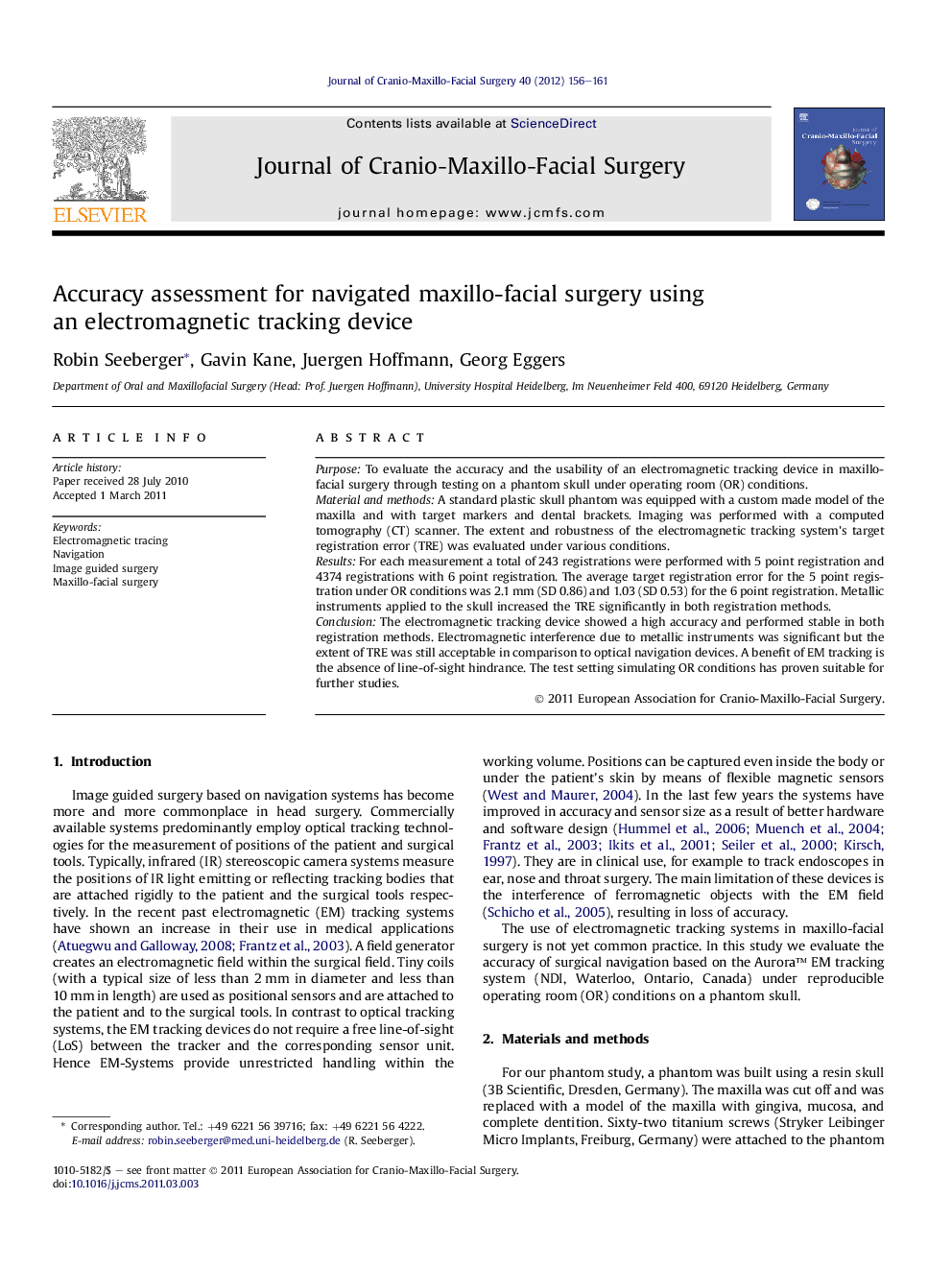| Article ID | Journal | Published Year | Pages | File Type |
|---|---|---|---|---|
| 3143082 | Journal of Cranio-Maxillofacial Surgery | 2012 | 6 Pages |
PurposeTo evaluate the accuracy and the usability of an electromagnetic tracking device in maxillo-facial surgery through testing on a phantom skull under operating room (OR) conditions.Material and methodsA standard plastic skull phantom was equipped with a custom made model of the maxilla and with target markers and dental brackets. Imaging was performed with a computed tomography (CT) scanner. The extent and robustness of the electromagnetic tracking system’s target registration error (TRE) was evaluated under various conditions.ResultsFor each measurement a total of 243 registrations were performed with 5 point registration and 4374 registrations with 6 point registration. The average target registration error for the 5 point registration under OR conditions was 2.1 mm (SD 0.86) and 1.03 (SD 0.53) for the 6 point registration. Metallic instruments applied to the skull increased the TRE significantly in both registration methods.ConclusionThe electromagnetic tracking device showed a high accuracy and performed stable in both registration methods. Electromagnetic interference due to metallic instruments was significant but the extent of TRE was still acceptable in comparison to optical navigation devices. A benefit of EM tracking is the absence of line-of-sight hindrance. The test setting simulating OR conditions has proven suitable for further studies.
